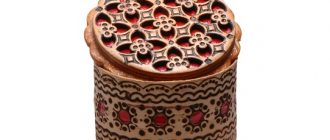Russian Pointe shoes portray brilliant craftsmanship and provide a supportive and comfortable fit for today’s ballerinas. Read our guide for more facts and information on Pointe shoes from Russia…
A Pointe shoe is a special type of shoe that is worn by ballerinas which enables dancers to perform on the tips of their toes for long durations. Dance shoes were conceptualized in the 17th century, when women started dancing in ballets. Though ballet shoes of those days had heels, non-heeled shoes were first worn by Marie Camargo, a dancer of Paris Opera Ballet, during the mid-eighteenth century. The flat-bottomed shoes, which later became common, were secured with ribbons and pleats.
History of Russian Pointe shoes
Towards the end of the 18th century, dancers rose up on their toes and audiences welcomed the light and ethereal performance style. The 19th century witnessed a progress in dance, with stress on technical skill, and Pointe shoes consisted of leather soles, with the sides and toes darned to make them shapely. Towards the end of that century, Italy came up with strong shoes that had flat platforms at the front ends, unlike the sharp pointed toes of previous models. The modern Russian Pointe shoe attributes its origin to Anna Pavlova, a Russian ballerina of the 20th century.
Modern Russian Pointe shoes
Aesthetically appealing and graceful, today’s Pointe shoes exhibit a decorative outer, with a minimal profile of the sole which is usually made of leather. The shank is made of leather or plastic and may have varying lengths and stiffness that may also be customized. Fabric ribbons or elastic bands secure the shoe to the foot. Two overlapping ribbons wrap around the ankle from opposite directions and are tied to form a knot. Ribbons and bands should be positioned optimally, to ensure the right fit.
Breaking in of Russian Pointe shoes
New Pointe shoes are softened to eliminate discomfort and provide a better fit. Dancers break in by striking or hammering them with heavy objects, heating them for softening glue, slamming them with doors, deforming them against tough surfaces, or wetting them with cold or warm water. As softening methods reduce the life of the shoes, some dancers endure the discomfort and continue dancing in them till they break in naturally.
Types of Russian Pointe shoes
Brio Pointe shoes are made to fit wider feet, providing ample space in the toe box, yet retaining a sleek appearance. Dolce Pointe shoes, the most celebrated of all, are pretty as well as athletic, and suit feet that are of medium width. For feet that are very highly arched, the Entrada Pointe shoes are optimal, as they are pre-arched and have a strong sole which resists being broken in severely.
Polette Russian Pointe shoes are available in a few types namely, the original Polette, the Polette ¾ having a very durable shank, and the Polette Grande meant for wide feet. All of them feature elastic strings and low heels. The Rubin Point shoes are suitable for low-arched feet and are pre-arched.
Today, Russian Pointe shoes come with flexible design options, and the ingenious construction from soft canvas, ribbons or bands make them delightfully light. The evolution of various utility features has been very appealing for ballet choreography and comfortable for professional ballerinas.





